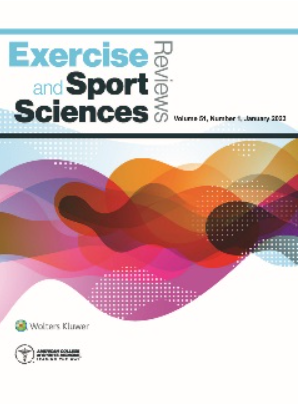静态拉伸降低运动神经元的兴奋性:神经调节的潜在作用。
IF 4.9
2区 医学
Q1 PHYSIOLOGY
引用次数: 0
摘要
长时间的静态肌肉拉伸会短暂地降低肌肉的最大力量,而这种力量损失有很强的神经成分。在这篇综述中,我们讨论的证据表明,拉伸降低了运动神经元的能力,以扩大兴奋驱动。我们提出了一个假设模型,其中拉伸导致生理放松,减少了脑干衍生的神经调节驱动,这是最大化运动神经元放电率所必需的。本文章由计算机程序翻译,如有差异,请以英文原文为准。
Static Stretching Reduces Motoneuron Excitability: The Potential Role of Neuromodulation.
Prolonged static muscle stretching transiently reduces maximal muscle force, and this force loss has a strong neural component. In this review, we discuss the evidence suggesting that stretching reduces the motoneuron's ability to amplify excitatory drive. We propose a hypothetical model in which stretching causes physiological relaxation, reducing the brainstem-derived neuromodulatory drive necessary to maximize motoneuron discharge rates.
求助全文
通过发布文献求助,成功后即可免费获取论文全文。
去求助
来源期刊

Exercise and Sport Sciences Reviews
社会科学-生理学
CiteScore
10.70
自引率
1.80%
发文量
72
期刊介绍:
Exercise and Sport Sciences Reviews made the transition from an annual hardcover series book to a quarterly journal in January 2000. The mission of this American College of Sports Medicine publication is to provide premier quarterly reviews of the most contemporary scientific, medical, and research-based topics emerging in the field of sports medicine and exercise science. The publication strives to provide the most relevant, topical information to students, professors, clinicians, scientists, and professionals for practical and research applications.
 求助内容:
求助内容: 应助结果提醒方式:
应助结果提醒方式:


